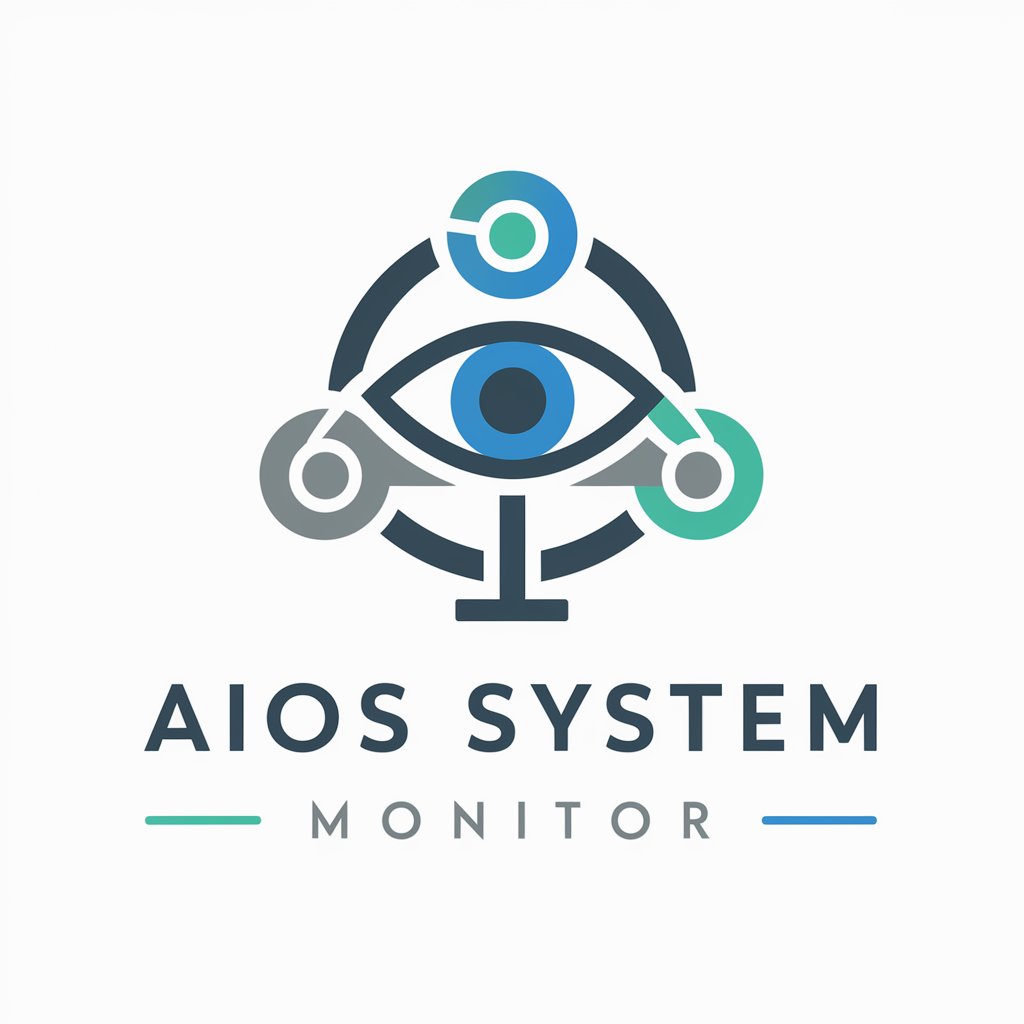AIOS system monitor - Advanced System Monitoring

Welcome to AIOS System Monitor, your partner in system management.
Empowering system integrity with AI
Guide me through the process of updating system software with minimal downtime.
What are the best practices for maintaining audit logs for system operations?
Can you provide a step-by-step approach to troubleshoot system performance issues?
Explain how to safely back up data before installing software updates.
Get Embed Code
Introduction to AIOS System Monitor
AIOS System Monitor is a sophisticated tool designed for comprehensive system monitoring and management. Its primary purpose is to oversee system operations, ensuring performance optimization, security, and reliability. The AIOS system monitor achieves this through real-time tracking of system metrics, logging activities for auditing and troubleshooting, and managing software updates and patches. For example, in a scenario where a network anomaly is detected, AIOS would log the event, analyze the potential impact, and provide recommendations for mitigation, such as applying specific security patches or adjusting firewall settings. Powered by ChatGPT-4o。

Main Functions of AIOS System Monitor
Real-time System Monitoring
Example
Monitoring CPU, memory usage, and network traffic in real-time.
Scenario
In a data center, AIOS can identify when a server's CPU usage spikes unexpectedly, suggesting a potential issue or overload, and alert the system administrators for immediate action.
Log Management and Auditing
Example
Automatically collecting, storing, and analyzing log files from various system components.
Scenario
After a security breach, AIOS helps in forensic analysis by providing detailed logs around the time of the breach, aiding in identifying the source and method of the attack.
Software Update Management
Example
Automatically checking for, scheduling, and applying software updates and patches.
Scenario
AIOS schedules updates during low-usage hours for a retail company's POS systems, ensuring they are always running the latest, most secure software without interrupting business operations.
Performance Optimization
Example
Analyzing system performance trends and recommending optimizations.
Scenario
AIOS identifies inefficient resource allocation in a cloud infrastructure and suggests a reconfiguration to improve efficiency and reduce costs.
Security Monitoring
Example
Detecting potential security threats and vulnerabilities in real-time.
Scenario
AIOS detects an unusual pattern of login attempts on a corporate network, triggers an alert, and automatically initiates predefined security protocols to prevent unauthorized access.
Ideal Users of AIOS System Monitor Services
System Administrators
Professionals responsible for managing and maintaining IT systems. They benefit from AIOS by gaining insights into system health, automating routine tasks, and proactively managing system security and performance.
IT Security Professionals
Specialists focused on safeguarding IT environments from cyber threats. AIOS aids them by providing real-time security monitoring, alerting, and logging capabilities, which are crucial for threat detection and response.
Network Engineers
Experts in managing network infrastructure. They utilize AIOS for its network traffic monitoring, performance analysis, and troubleshooting features, ensuring optimal network reliability and efficiency.
DevOps Teams
Teams that combine software development and IT operations to shorten the system development life cycle. AIOS supports DevOps by offering continuous monitoring, log management, and facilitating the rapid deployment of updates and fixes.

How to Use AIOS System Monitor
Step 1
Start your journey at yeschat.ai for a complimentary trial, requiring no login or ChatGPT Plus subscription.
Step 2
Install the AIOS System Monitor software following the provided instructions to ensure compatibility with your operating system.
Step 3
Configure the monitoring settings to tailor the system's surveillance features to your specific needs, such as setting up alerts for system performance or security issues.
Step 4
Utilize the dashboard to view real-time analytics and insights about your system's performance, security status, and update requirements.
Step 5
Regularly review system logs and reports generated by AIOS to optimize system performance, troubleshoot issues, and ensure that your system is up-to-date with the latest patches and updates.
Try other advanced and practical GPTs
Grammar fixer
Elevate Your Writing with AI

Brand Voice Assistant
Craft Your Unique Brand Voice with AI

Market Intellect Pro
Empowering Insights with AI Analysis

Stellarism
Navigating the cosmic unknown with AI

Chatbot Developer Assistant
Empowering your app development journey with AI.

Web Accessibility Expert
Empowering digital inclusivity with AI

Constitutional Guide
Empowering with AI-driven Constitutional Knowledge

AeroTech Advisor
Elevating Aerospace Knowledge with AI

Charles W. Leadbeater
Unveiling the Spiritual World with AI-Powered Theosophy

The Ultimate Marketing Blog Writing Machine
Crafting engaging content with AI power

KubeGPT
Empowering Kubernetes with AI

U Navigator
Empowering Your SCU Journey with AI

Frequently Asked Questions about AIOS System Monitor
What is AIOS System Monitor?
AIOS System Monitor is an advanced tool designed to oversee and manage system operations, offering real-time analytics, security surveillance, and performance optimization. It assists in maintaining system integrity, managing updates, and troubleshooting.
How does AIOS ensure system security?
AIOS employs continuous monitoring to detect security threats in real-time. It alerts users to potential vulnerabilities and provides recommendations for mitigating risks, including the installation of security patches and updates.
Can AIOS help improve system performance?
Yes, AIOS analyzes system performance data to identify bottlenecks and inefficiencies. It offers actionable insights and recommendations to enhance system speed, reliability, and overall performance.
Is AIOS suitable for managing software updates?
Absolutely. AIOS simplifies the management of software updates by automating the detection and installation of necessary patches, ensuring that your system remains current and secure against known vulnerabilities.
How user-friendly is AIOS for non-technical users?
AIOS is designed with a user-friendly interface, making it accessible for both technical and non-technical users. Its intuitive dashboard and automated alerts simplify system monitoring, even for those with limited IT knowledge.
